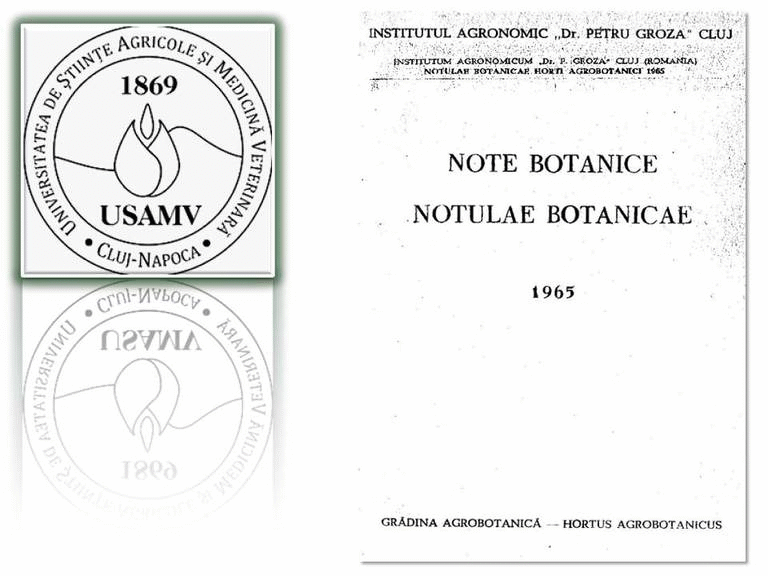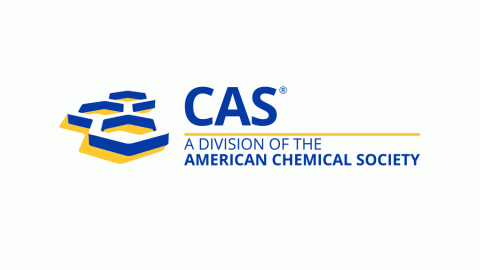Stability of the expression of the maize productivity parameters by AMMI models and GGE-biplot analysis
DOI:
https://doi.org/10.15835/nbha48312058Keywords:
G×Y×L×T interaction; number of rows of grains; PCA1 and PCA2; Zea maysAbstract
The objective of this study was to estimate genotype by locality, by year, by treatments (G×LxYxT) interaction using AMMI model, to identify maize genotypes with stable number of rows of grains performance in different growing seasons. The trials conducted with seven maize lines/genotypes, four treatments, two years and at the two locations. The results showed that the influence of genotype (G), year (Y), locality (L), and G×L, G×T, G×L×T, G×Y×T, G×Y×L×T interaction on maize number of rows of grains were significant (p<0.01). The genotype share in the total phenotypic variance for the grains number rows of was 53.50%, and the interaction was 21.15%. The results also show that the sums of the squares of the first and second major components (PC1 and PC2) constitute 100% of the sum of the squares of the interaction G×L. The first PC1 axis belongs to all 100%, which points to the significance of the genotype in the total variation and significance of the genotype for overall interaction with other observed sources of variability. The highest stability in terms of expression of the grains number of rows had the genotype L-6, followed by the genotypes L-4, L-5 and L-3. The lowest stability was demonstrated by the genotypes L-2 and L-1, which confirmed that these genotypes are not important for further selection in terms of this trait.
References
Adu GB, Akromah R, Abdulai MS, Obeng-Antwi K, Kena AW, Tengan KML, Alidu H (2013). Assessment of genotype by environment interactions and grain yield performance of extra-early maize (Zea mays L.) hybrids. Assessment 3(12).
Babić V, Kravić N, Živić J, Srdić J, Popović A, Nikolić A, Miritescu M (2018). Grain quality within ex situ and in situ conserved traditional white maize landraces. Romanian Agricultural Research 35:129-140. http://www.incda-fundulea.ro/rar/nr35/rar35.17.pdf
Boakyewaa AG (2012). Genotype by environment interaction and grain yield stability of extra early maize (Zea mays L.) hybrids evaluated at three locations in Ghana. PhD Thesis. Faculty of Agriculture, Kwame Nkrumah University of Science & Technology, Kumasi, Ghana.
Borojević S (1965). Mode of inheritance and heritability of qualitative properties in crossings various varieties of wheat. Contemporary Agriculture 7(8):587-607.
Božović D (2018). Stability of yield and maize compounds in conditions of stress under the sulphonylurea. Doctoral Dissertation, University of Belgrade, Faculty of Agriculture, Belgrade pp 1-205.
Božović D, Živanović T, Popović V, Tatić M, Gospavić Z, Miloradović Z, … Đokić M (2018). Assessment stability of maize lines yield by GGE-biplot analysis. Genetika 50(3):1-10. https://doi.org/10.2298/GENSR1803755B
Branković-Radojčić D, Srdić J, Milivojević M, Šurlan-Momirović G, Radojčić A, Živanović, T, Todorović G (2017). Variability of agronomic traits of maize hybrids influenced by the environmental factors. Journal on Processing and Energy in Agriculture 21(3): 149-153. http://rik.mrizp.rs/handle/123456789/661
Crossa J (1990). Statistical analysis of multilocation trials. Advances in Agronomy 44:55-85. https://doi.org/10.1016/S0065-2113(08)60818-4
Deitos A, Arnhold E, Miranda GV (2006). Yield and combining ability of maize cultivars under different eco-geographic conditions. Crop Breeding and Applied Biotechnology 6:222-227.
Ding M, Tier B, Yan W (2007). Application of GGE biplot analysis to evaluate genotype (G), environment (E) and G x E interaction on P. radiata: a case study. Australasian Forest Genetics Conference Breeding for Wood Quality, Tasmania, Australia.
Dragićević V, Simić M, Jovanović-Radovanov K, Brankov M, Srdić J (2017). Reaction of susceptible maize inbred lines to herbicides. Genetika 49(3):765-774. https://doi.org/10.2298/GENSR1703765D
Filipović M, Jovanović Ž, Tolimir M (2015). Direction of selection of new ZP hybrids. XX Conference on Biotechnology. Čačak 20(22):7-13.
Gauch HG (1992). Statistical analysis of regional yield trials: AMMI analysis of factorial designs. Elsevier, Amsterdam, pp 278.
Gauch HG (2006). Statistical analysis of yield trials by AMMI and GGE. Crop Science 46:1488-1500. https://doi.org/10.2135/cropsci2005.07-0193
Gauch HG, Zobel RW (1996). AMMI analysis of yield trials. In: Genotype by Environment Interaction. CRC Press, Boca Raton, FL, pp 85-122.
Ikanović J, Živanović Lj, Popović V, Kolarić Lj, Dražić G, Janković S, Pavlović S (2018). Possibility of greater use of maize as a bioenergy. Institute of PKB Agroekonomik 24(1-2):49-59.
Ilker E, Aykut Tonk F, Çaylak Ö, Tosun M, Özmen L (2009). Assessment of genotype x environment interactions for grain yield in maize hybrids using AMMI and GGE biplot analyses. Turkish Journal of Field Crops 14(2):123-135. http://www.field-crops.org/assets/pdf/product541b1a41a6877.pdf
Johnson R, Bhattacharyya G (2010). Statistics, principles and methods. 6th Ed. John Wiley & Sons.
Kandus M, Almorza D, Boggio Ronceros R, Salerno JC (2010). Statistical models for evaluating the genotype environment interaction in maize (Zea mays L.). Fyton-Revista Internacional de Botanica Experimental 79:39-46. https://pdfs.semanticscholar.org/42f2/188bbd19e489a5bc0ba6de3326db96acad39.pdf
Lee EA, Doerksen TK, Kannenberg LW (2003). Genetics of yield stability in maize breeding populations. Crop Science 43:2018-2027. https://doi.org/10.2135/cropsci2003.2018
Lorenzana RE, Bernardo R (2008). Genetic correlation between corn performance in organic and conventional production systems. Crop Science 48:903-910. https://doi.org/10.2135/cropsci2007.08.0465
Ma BL, Yan W, Dwyer LM, Frégeau-Reid J, Voldeng HD, Dion Y, Nass H (2004). Graphic analysis of genotype, environment, nitrogen fertilizer, and their interaction on spring wheat yield. Agronomy Journal 96:169-180. https://doi.org/10.2134/agronj2004.1690
Maksimović L, Popović V, Stevanović P (2018). Water and irrigation requirements of field crops grown in central Vojvodina, Serbia. Agriculturе and Forestry 64(1):133-144. https://doi.org/10.17707/AgricultForest.64.1.16
Morris CE, Sands DC (2006). The breeder’s dilemma-yield or nutrition? Nature Biotechnology 24:1078-1080. https://doi.org/10.1038/nbt0906-1078
Padalino L, Mastromatteo M, Sepielli G, Del Nobile MA (2011). Formulation optimization of gluten-free functional spaghetti based on maize flour and oat bran enriched in β-glucans. Materials 4:2119-2135. https://doi.org/10.3390/ma4122119
Pavlov M, Crevar M (2014). Effects of agroecological factors and hybrid combinations on seed traits of maize hybrids. Journal on Processing and Energy in Agriculture 18(1):11-13.
Petrović S, Dimitrijević M, Belić M, Banjac B, Vukosavljević M (2009). Spike stability parameters in wheat grown on solonetz soil. Genetika 41(2):199-205. https://doi.org/10.2298/GENSR0902199P
Popović V (2010). Influence of agro-technical and agro-ecological practices on seed production of wheat, maize and soybean. Doctoral dissertation, University of Belgrade, Faculty of Agriculture, Zemun-Belgrade, Serbia pp 1-145.
Popović V, Tatić M, Ikanović J, Drazić G, Mihailović B, Đukić V… Stevanović P (2016). Variability of yield and chemical composition in soybean genotypes grown under different agroecological conditions of Serbia. Romanian Agricultural Research 33:29-39.
Sabaghniaa N, Dehghania H, Sabaghpour B (2006). Nonparametric methods for interpreting genotype × environment interaction of lentil genotypes. Crop Science 46:1100-1106. https://doi.org/10.2135/cropsci2005.06-0122
Sarcevic-Todosijevic Lj, Zivanovic Lj, Janjic S, Popovic V, Ikanovic J, Popovic S, Drazic G (2016). The influence of nitrogen fertilizer on the total number of microorganisms and amino-autotroph dynamics under ‘Ugar’ and sown maize. Agriculture and Forestry 62(3):185-196. https://doi.org/10.17707/AgricultForest.62.3.16
Spasojević I, Dragičević V, Simić M, Kovačević D, Brankov M (2014). Effects of different cropping systems and weed management methods on free energy and content of pigments in maize. Pesticidi i Fitomedicina 29(1):45-54. https://doi.org/10.2298/PIF1401045S
Srdić J, Mladenović Drinić S, Pajić Z, Filipović M (2007). Characterization of maize inbred lines based on molecular markers, heterosis and pedigree data. Genetika 39(3):355-363. https://doi.org/10.2298/GENSR0703355S
Urechean V, Bonea D (2017). Coexistence in cultivation of genetically modified maize (MON810) with conventional maize. Romanian Agricultural Research 34:1-8.
Živanović Lj, Savić J, Ikanović J, Kolarić Lj, Popović V, Novaković M (2017). The influence of genotype on wheat, soybean, corn and sunflower grain yield. Jourbnal of Institute of PKB Agroekonomik Belgrade 23:1-2.
Downloads
Published
How to Cite
Issue
Section
License
Copyright (c) 2020 Dragan BOŽOVIĆ, Vera POPOVIĆ, Vera RAJIČIĆ, Marko KOSTIĆ, Vladimir FILIPOVIĆ, Ljubiša KOLARIĆ, Vladan UGRENOVIĆ, Velibor SPALEVIĆ

This work is licensed under a Creative Commons Attribution 4.0 International License.
License:

Open Access Journal:
The journal allows the author(s) to retain publishing rights without restriction. Users are allowed to read, download, copy, distribute, print, search, or link to the full texts of the articles, or use them for any other lawful purpose, without asking prior permission from the publisher or the author.











.png)







